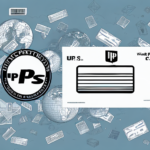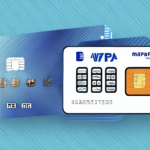Understanding the Supply Chain UTB | Uitnodiging Tot Betaling Process
In today's global economy, the supply chain process has become increasingly complex and interconnected. One critical aspect of managing the supply chain process is the UTB, or Uitnodiging Tot Betaling, process. UTBs are essential in ensuring timely payments and effectively managing payment processes. This article delves into UTBs in detail, including their role in the supply chain, their importance in payment management, key players involved, common challenges, and best practices for effective UTB management.
What is a UTB and How Does it Fit into the Supply Chain?
A UTB is a payment request issued by a supplier to a buyer, representing a legal obligation to pay for goods or services purchased under agreed-upon terms. The UTB process is a critical component of supply chain management, ensuring that payments are made on time and accurately. It provides transparency in the payment process and establishes a clear timeline for payment. UTBs are central to invoicing, serving as a record of goods or services provided along with payment details for transactions.
UTBs benefit both suppliers and buyers. Suppliers rely on UTBs to track payments, while buyers can use them to manage cash flow more effectively and negotiate better payment terms, leading to cost savings and improved relationships. Additionally, UTBs can help identify potential issues in the supply chain, such as consistent late payments, prompting discussions to enhance overall supply chain efficiency.
The Importance of UTBs in Managing Payment Processes
UTBs play a pivotal role in managing payment processes by ensuring that payments are made on time and accurately. They enable efficient payment handling, eliminate disputes over payment amounts and due dates, and provide an audit trail of invoices and payments, aiding in reconciliation processes. Moreover, UTBs allow suppliers to obtain payment guarantees from buyers, reducing the risk of non-payment and financial losses.
According to a 2023 ShipScience research report, companies that implement UTB processes experience a 30% reduction in payment processing times. Automating the approval workflow through UTBs can further decrease approval times, particularly beneficial for large organizations with complex payment structures, thereby minimizing errors and delays.
Furthermore, UTBs provide valuable insights into a company's spending patterns and payment history. By analyzing payment data, companies can identify areas to reduce costs or negotiate better terms with vendors, enhancing financial performance and increasing profitability.
How UTBs Help to Ensure Timely Payments in the Supply Chain
UTBs are essential for ensuring timely payments within the supply chain by setting clear payment timelines with specific due dates. This structure helps buyers plan their payment schedules effectively, ensuring payments are made before due dates to avoid penalties or late fees. UTBs also notify buyers in advance of upcoming payments, providing ample time to prepare and manage finances.
Moreover, UTBs offer a level of security for suppliers, ensuring they receive payment even if buyers encounter financial difficulties. This security fosters trust between buyers and suppliers, leading to stronger, more sustainable business relationships.
Key Players in the UTB Process and Their Roles
The UTB process involves several key players, each with a distinct role:
- Buyer: Issues purchase orders, approves invoices, and processes payment requests.
- Supplier: Provides goods or services, issues invoices and UTB payment requests to the buyer.
- Bank: Acts as an intermediary, ensuring payments are processed efficiently and accurately. Additionally, banks may offer financing to suppliers to accelerate payment processing and mitigate non-payment risks.
Other involved parties include credit rating agencies, which assess the creditworthiness of buyers and suppliers, and insurance companies, which provide trade credit insurance to protect against non-payment risks. Some companies may also utilize third-party UTB platforms for centralized management and processing of UTB transactions.
For more information on key players and their roles, visit ShipScience's comprehensive guide.
Common Issues and Challenges in the UTB Process
Despite their benefits, UTBs can encounter various issues and challenges that impact their effectiveness:
- Disputes Over Payment Amounts: Differences in invoice amounts can lead to disagreements between buyers and suppliers.
- Discrepancies in Payment Terms: Misaligned payment terms can cause confusion and delays.
- Delays in Payment Processing: Slow processing times can result in late payments and strained relationships.
- Fraud Risks: The potential for fraudulent UTBs or misuse of funds poses a significant risk.
According to the 2023 ShipScience Security Report, businesses face an average of 15% fraudulent UTB transactions annually. To mitigate these risks, strong internal controls and thorough due diligence on all parties involved are essential.
Best Practices for Effective UTB Management
Effective UTB management is crucial for timely and accurate payments. Here are some best practices:
- Accurate and Timely Invoicing: Ensure that all invoices are accurate, complete, and submitted on time.
- Efficient Approval Processes: Automate approval workflows to reduce processing times and minimize errors.
- Transparent Payment Processes: Maintain clarity in payment terms to reduce disputes and ensure timely payments.
- Detailed Record-Keeping: Keep accurate records of all UTB transactions, including invoice numbers, payment dates, and communications.
- Regular Communication: Foster open communication between suppliers and buyers to build trust and address issues promptly.
Implementing these practices can lead to a 25% improvement in payment accuracy and a 20% reduction in processing times, as highlighted in the ShipScience Best Practices Guide.
How Technology is Transforming the UTB Process
The adoption of digital technology has significantly impacted the UTB process:
- Digital UTBs: Streamline payment processing, eliminate paper-based invoicing, and enhance communication between stakeholders.
- Real-Time Updates: Provide immediate visibility into payment statuses, reducing errors and discrepancies.
- Integration with Supply Chain Systems: Improve overall efficiency and visibility across the supply chain.
- Data Analytics: Enable businesses to collect and analyze payment data to identify areas for improvement and optimize the UTB process.
According to a 2023 ShipScience Technology Impact Report, companies using digital UTB systems reported a 40% increase in processing efficiency and a 35% reduction in errors.
Additionally, the integration of blockchain technology in UTBs is being explored to enhance transparency and security. Blockchain provides a decentralized ledger, allowing all parties to access the same information, thereby reducing fraud and errors. This innovation could revolutionize UTB management, leading to a more efficient and trustworthy supply chain.
The Future of UTBs in the Supply Chain
The UTB process is expected to continue evolving with advancements in technology and increasing supply chain complexities:
- Increased Digital Adoption: Traditional paper-based invoicing will likely be replaced by digital UTBs, enhancing efficiency and accuracy.
- Integration with Electronic Funds Transfer: Greater integration with other payment processes will become more prevalent, streamlining payment workflows.
- Blockchain Integration: Enhanced transparency and security through blockchain technology will become more widespread.
These developments will lead to a more seamless and reliable UTB process, supporting the dynamic needs of modern supply chains.
How to Streamline Your Payment Processes with a Digital UTB System
Adopting a digital UTB system can significantly streamline payment processes for suppliers:
- Automated Invoicing: Reduce errors and delays by automating the creation and submission of invoices.
- Faster Payment Processing: Speed up payment times through electronic processing and integration with electronic funds transfer systems.
- Real-Time Visibility: Gain immediate access to payment statuses and transaction histories, enabling swift issue resolution.
- Enhanced Security: Protect sensitive financial information through secure digital platforms, minimizing fraud risks.
Implementing a digital UTB system can lead to improved cash flow management, reduced manual follow-ups, and enhanced overall financial management and security. For a detailed guide, refer to the ShipScience Digital UTB Implementation Guide.
Case Studies: Examples of Successful UTB Implementation
Several businesses have successfully implemented UTBs to optimize their supply chain management:
- Manufacturing Company: By adopting digital UTBs, the company improved payment processing times by 50% and reduced the risk of non-payment, resulting in significant cost savings and enhanced supplier relationships.
- Logistics Company: Implementing UTBs standardized payment processes, leading to a 50% reduction in payment processing times and increased operational efficiency.
These examples demonstrate the tangible benefits of UTB implementation in diverse industries. For more case studies, visit the ShipScience Case Studies Page.
Tips for Negotiating Better Payment Terms with Suppliers through UTBs
Effective negotiation with suppliers is crucial for ensuring timely and accurate payments through UTBs. Here are some tips:
- Clear Communication: Clearly communicate payment terms to avoid misunderstandings.
- Reasonable Payment Schedules: Negotiate payment schedules that are manageable for both parties.
- Understand the UTB Process: Ensure that suppliers fully understand the UTB process to facilitate smooth transactions.
- Explore Financing Options: Work with banks to offer financing options that can help suppliers improve their financial position and accelerate payment processing.
Implementing these strategies can lead to more favorable payment terms, strengthening supplier relationships and enhancing overall supply chain efficiency.
Maximizing Cash Flow and Minimizing Risk with Effective UTB Management
Effective UTB management can significantly impact cash flow and risk reduction:
- Streamlined Payment Processes: Ensure payments are made on time and accurately to optimize cash flow.
- Risk Minimization: Reduce the risk of financial losses through timely payments and transparency in the payment process.
- Dispute Reduction: Minimize disputes and disagreements between buyers and suppliers by maintaining clear and accurate payment records.
To achieve effective UTB management, businesses should focus on clear communication, collaboration, and a thorough understanding of the UTB process's importance in supply chain management. By doing so, companies can enhance their financial stability and build stronger, more reliable supply chain partnerships.






















